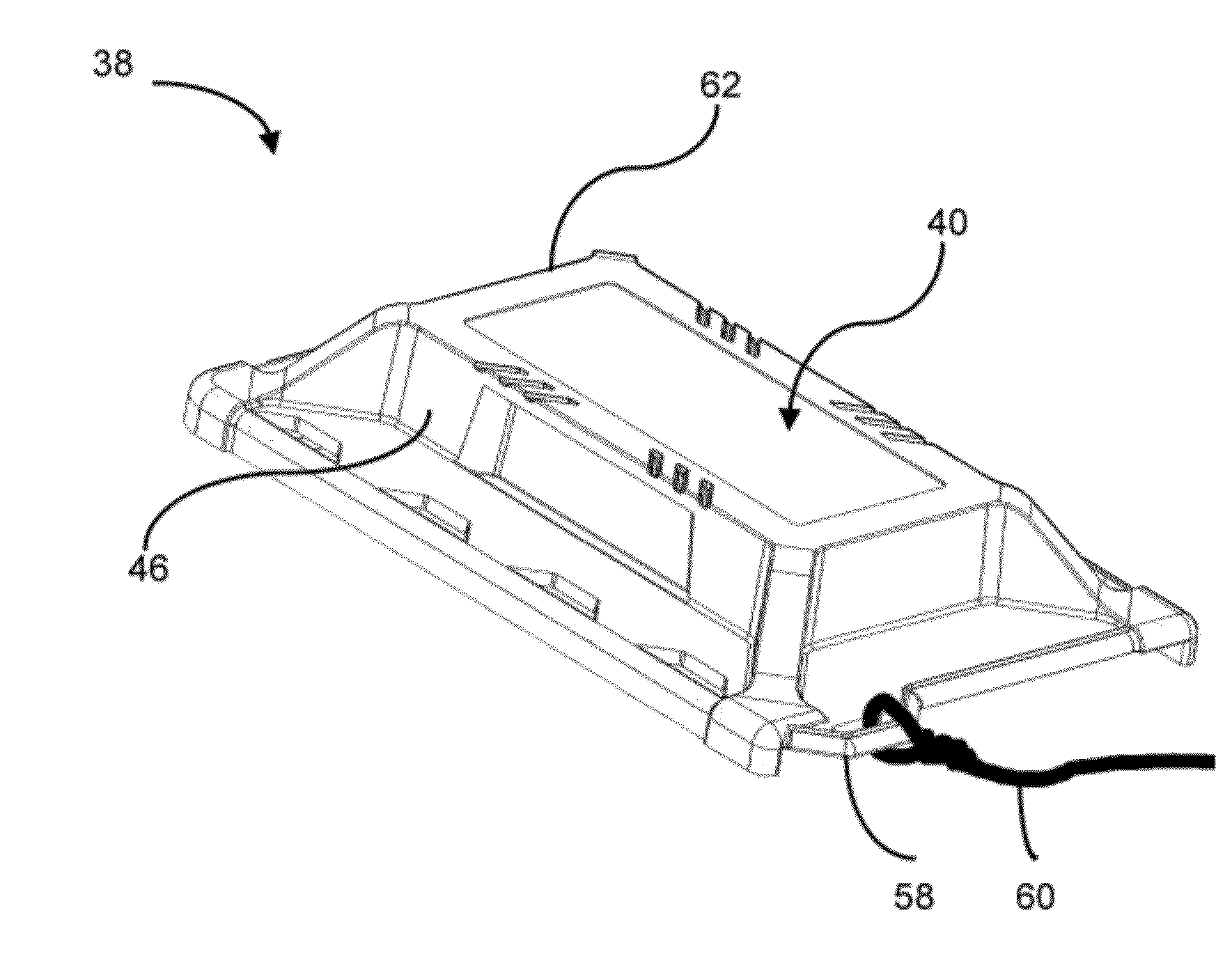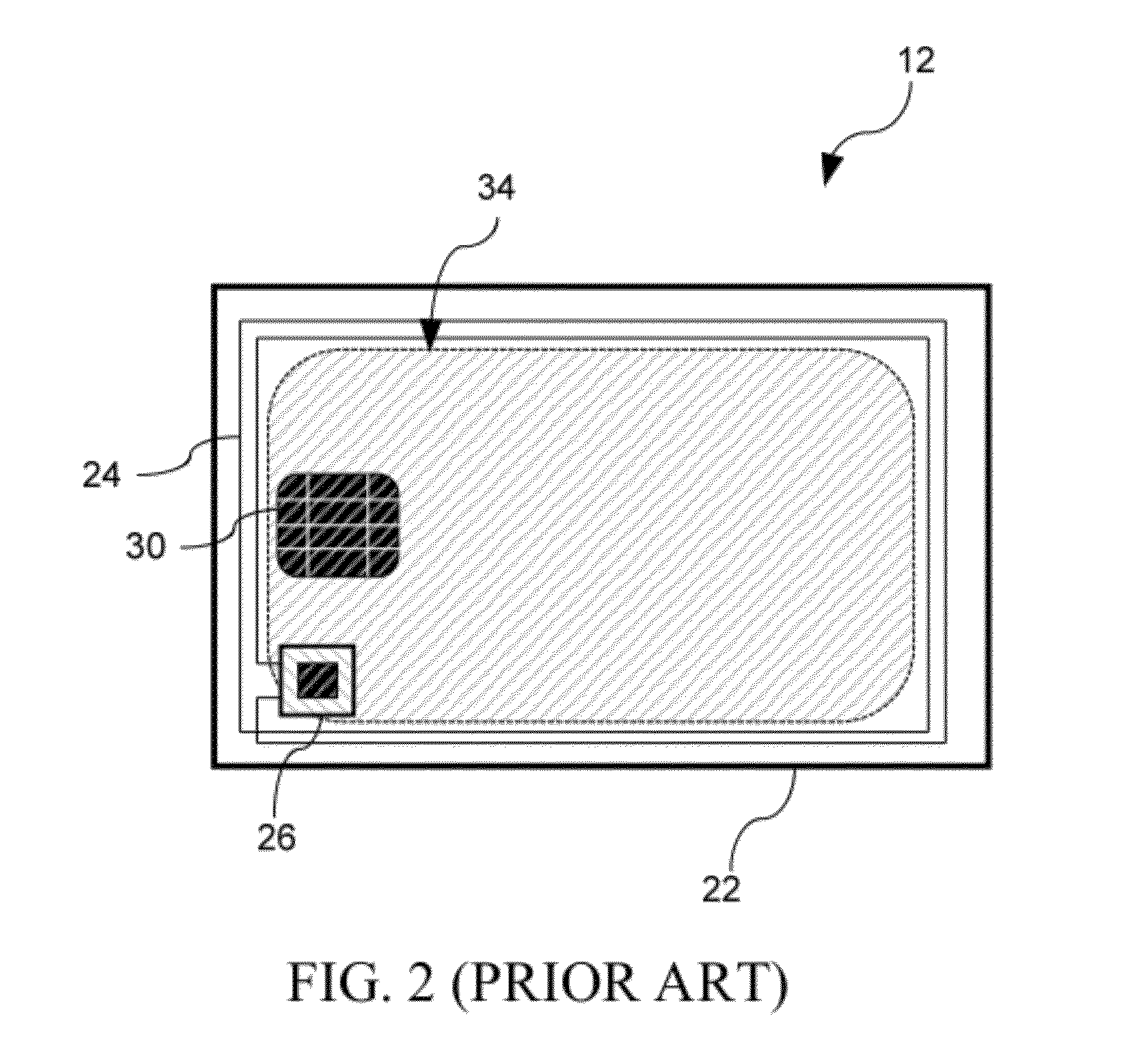RFID proximity card holder with flux directing means
a technology of magnetic flux and proximity card holder, which is applied in the field of magnetic flux directing means for proximity card holder, can solve the problems of unable to power and use the proximity card, unable to achieve the proper positioning of the proximity card relative to the lines of flux generated by the reader, and unable to achieve the proper positioning of the proximity card in real-world operation
- Summary
- Abstract
- Description
- Claims
- Application Information
AI Technical Summary
Problems solved by technology
Method used
Image
Examples
Embodiment Construction
[0020]Referring to FIG. 1, a contactless smartcard system in accordance with an illustrative embodiment of the present invention, generally referred to using the reference number 10 is described. In particular, the contactless smartcard system 10 comprises an RFID proximity card 12 and a contactless interface 14, also generally known in the art as a card reader or a card interrogator, for powering and communicating with the proximity card 12. Generally, the reader 14 comprises a reader antenna coil 16 that provides energy in the form of a generated magnetic flux 18 and / or for communication with an RFID proximity card 12 when brought into proximity with the reader 14, as well as electronics 20 to process validation and other information transmitted from the RFID proximity card 12. In accordance with the illustrative embodiment of the present invention, when the contactless smartcard system 10 is used for public transit applications, the reader 14 is commonly located in fare boxes, ti...
PUM
 Login to View More
Login to View More Abstract
Description
Claims
Application Information
 Login to View More
Login to View More - R&D
- Intellectual Property
- Life Sciences
- Materials
- Tech Scout
- Unparalleled Data Quality
- Higher Quality Content
- 60% Fewer Hallucinations
Browse by: Latest US Patents, China's latest patents, Technical Efficacy Thesaurus, Application Domain, Technology Topic, Popular Technical Reports.
© 2025 PatSnap. All rights reserved.Legal|Privacy policy|Modern Slavery Act Transparency Statement|Sitemap|About US| Contact US: help@patsnap.com



